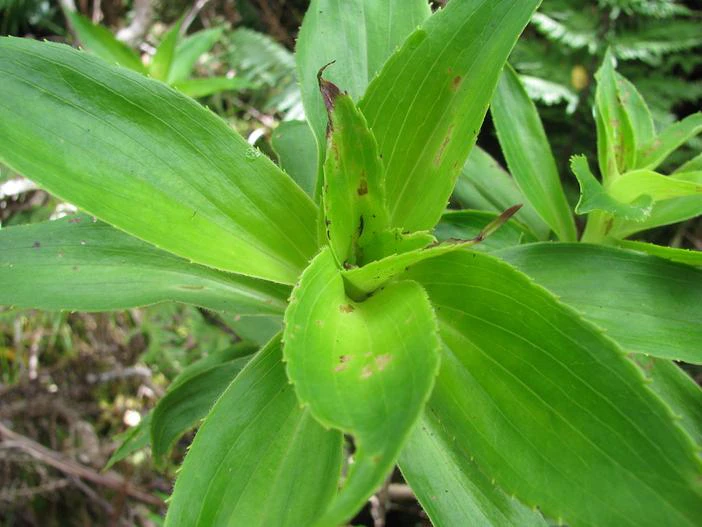Plantainleaf Dubautia
(Dubautia plantaginea)
Plantainleaf Dubautia (Dubautia plantaginea)
/
/

Forest and Kim Starr
CC BY 2.0
Image By:
Forest and Kim Starr
Recorded By:
Copyright:
CC BY 2.0
Copyright Notice:
Photo by: Forest and Kim Starr | License Type: CC BY 2.0 | License URL: https://creativecommons.org/licenses/by/2.0/ | Uploader: Starr Environmental | Publisher: Flickr



















Estimated Native Range
Climate Requirements for Hanford, California
| This Plant | Your Site | Plant Suitability for Your Location | ||
|---|---|---|---|---|
| • Precipitation | 41" - 184" | 8" | Your precipitation may be insufficient for this plant. Irrigate N" / year. | Irrigate N" / year |
| • High Temp. | 73°F - 86°F | 97°F | Your summers may be too hot for this plant. | Too hot |
| • Low Temp. | 51°F - 63°F | 36°F | Your winter temperatures may be too cold for this plant | Too cold |
This plant should grow well at your location with about N inches per year (Y minutes per month) of irrigation.
Summary
Dubautia plantaginea, commonly known as plantainleaf dubautia, is a rare flowering plant in the aster family, endemic to Hawaii. It is notable for being the only member of the silversword alliance found on all six of the largest Hawaiian Islands: Kaua’i, O’ahu, Moloka’i, Lana’i, Maui, and Hawai’i. The species exhibits a range of morphologies, from a small shrub to a tree that can reach up to 23 feet in height. There are three subspecies, with ssp. humilis being a dwarf form endemic to Maui, and ssp. magnifolia found on Kaua’i. Both subspecies are federally listed as endangered, with ssp. humilis listed in 1999 and ssp. magnifolia in 2010.
Dubautia plantaginea thrives in moist and wet forest habitats, receiving 75 to over 276 inches of annual precipitation. It is valued for its rarity and its ecological role in Hawaiian ecosystems. The plant’s flowers are not particularly showy, but its presence is a key indicator of the health of its native habitat. In cultivation, it requires conditions that mimic its natural wet forest environment, including high humidity and consistent moisture. It is not commonly cultivated due to its rarity and specific habitat requirements. Threats to Dubautia plantaginea include natural disasters such as landslides and rockslides, as well as competition from invasive plant species.CC BY-SA 4.0
Dubautia plantaginea thrives in moist and wet forest habitats, receiving 75 to over 276 inches of annual precipitation. It is valued for its rarity and its ecological role in Hawaiian ecosystems. The plant’s flowers are not particularly showy, but its presence is a key indicator of the health of its native habitat. In cultivation, it requires conditions that mimic its natural wet forest environment, including high humidity and consistent moisture. It is not commonly cultivated due to its rarity and specific habitat requirements. Threats to Dubautia plantaginea include natural disasters such as landslides and rockslides, as well as competition from invasive plant species.CC BY-SA 4.0
Plant Description
- Plant Type: Shrub
- Height: 1-3 feet
- Width: 1-2 feet
- Growth Rate: Slow
- Flower Color: N/A
- Flowering Season: Summer, Fall
- Leaf Retention: Evergreen
Growth Requirements
- Sun: Full Sun, Part Shade
- Water: Medium
- Drainage: Medium, Fast
Common Uses
Bird Garden, Butterfly Garden, Deer Resistant, Drought Tolerant, Erosion Control, Hummingbird Garden, Low Maintenance
Natural Habitat
Moist and wet forest habitats in Hawaii with high annual precipitation
Other Names
Common Names: Na’ena’e
Scientific Names: Dubautia plantaginea, Dubautia plantaginea f. plantaginea, Dubautia plantaginea var. plantaginea
GBIF Accepted Name: Dubautia plantaginea